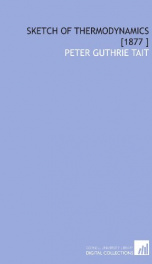light

Purchase of this book includes free trial access to www.million-books.com where you can read more than a million books for free. This is an OCR edition with typos. Excerpt from book: CHAPTER III. SOURCES OF LIGHT. 24. This subject is really, from the theoretical point of view, the question of the origin of Radiation; while from the practical point of view it expressly includes the whole subject of candles, lamps, electric lighting, etc. The former of these is a legitimate part of our work, and will be treated with some little detail farther on; the latter is altogether beyond our province. But the general theory must be learned by the student from some of the recent really scientific works upon Heat, Thermodynamics, or Energy generally. For our present purpose a very brief summary of the question will suffice; as we do not for the moment require to investigate the process by which, in any case, the light is produced. 25. The main source of light is Incandescence. (It is usually understood that to be incandescent a body must be at a high temperature.) This may be due to any of a number of causes, such as the following: (a) The Potential Energy of Gravitation of Scattered Fragments of Matter.When these fall together, as in the formation of the sun and stars, heat enough is generated by impact to render the whole vividly incandescent. It is probable that the light of nebulae, and the proper lightof comets, is due to this cause. The proximate cause, in all these cases, is the kinetic energy of the fragments before impact. To this class, therefore, can be reduced the light given out when a target is struck by a cannon shot. (b) The Kinetic Energy of Current Electricity or of an Electric Discharge.Here we have lightning, the electric light (whether it be the arc-light or the incandescent light), and probably also the light of the aurora. (c) The Potential Energy of Chemical Affinity.The lime-light, gas-light, candle and lamp-light, fire-light, ...
Info about the book
Author:
Series:
Unknown
ISBN:
1408617277
Rating:
4/5 (3)Your rating:
0/5
Languge:
English
Users who have this book
Users who want this book
What readers are saying
What do you think? Write your own comment on this book!
write a commentif you like light try:
Other books by this author
Do you want to exchange books? It’s EASY!
Get registered and find other users who want to give their favourite books to good hands!




